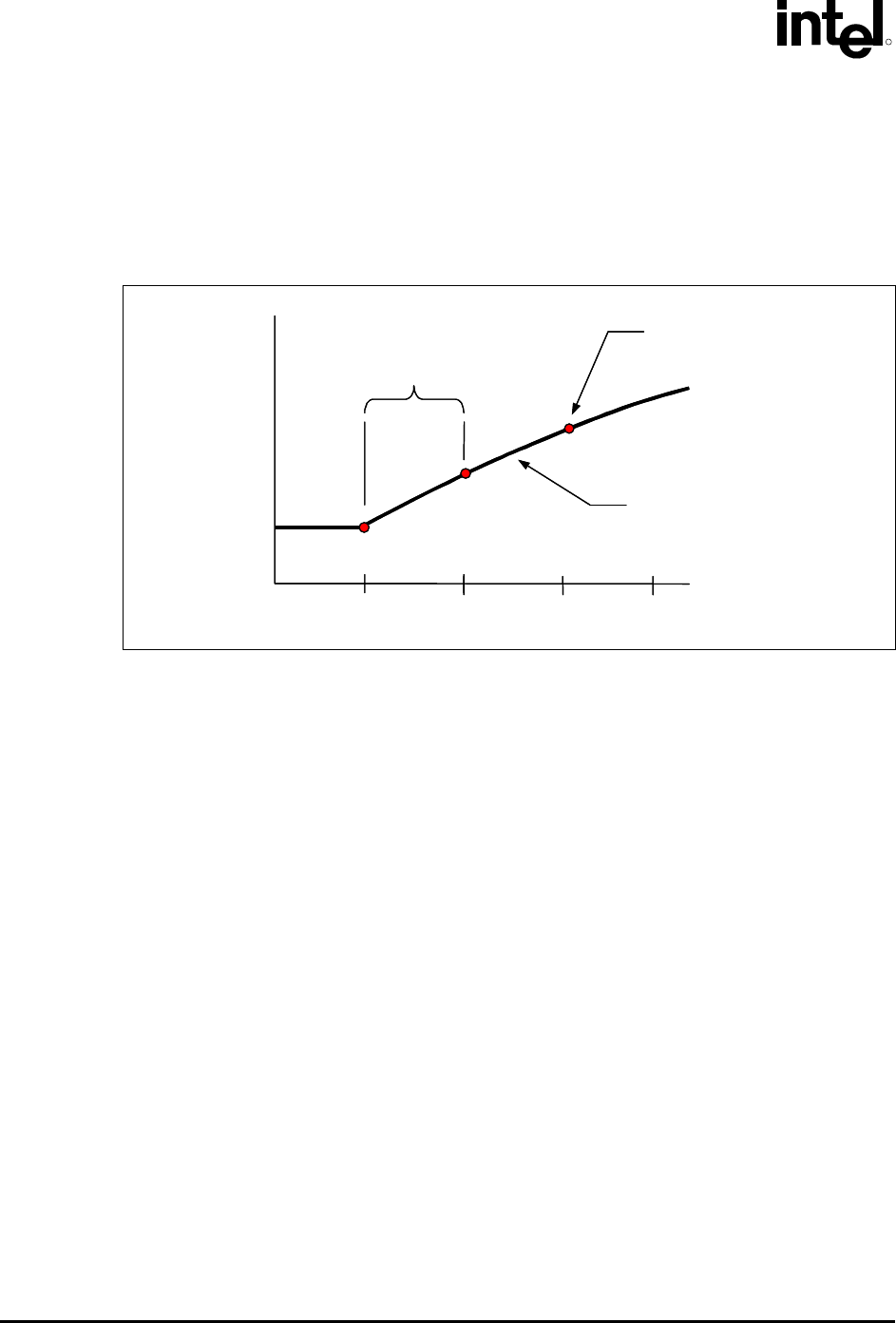64-bit Intel Xeon Processorwith 1MB L2 Cache Thermal/Mechanical Design Guidelines
Table Of Contents

Processor Thermal Management Logic and Thermal Monitor Features
R
60 64-bit Intel
®
Xeon™ Processor MP with 1 MB L2 Cache
Thermal/Mechanical Design Guidelines
The on-die thermal diode can be used with an external device (thermal diode sensor) to monitor
long-term temperature trends. By averaging this data information over long time periods (hours/days
vs. min/sec), it may be possible to derive a trend of the processor temperature. Analysis of this
information could be useful in detecting changes in the system environment that may require
attention. Design characteristics and usage models of the thermal diode sensors are described in
datasheets available from the thermal diode sensor manufacturers.
Figure F-4. On-Die Thermal Diode Sensor Time Delay
Processor Temperature
Time in 1/16
th
Second Intervals
Temperature is Averaged over
1/16
th
Second
Temperature is
Reported 1/16
th
Second Later
Processor
Temperature Ramp
F.1.7.2 THERMTRIP# Signal Pin
In the event of a catastrophic cooling failure, the processor will automatically shut down when the
silicon temperature has reached its operating limit. At this point the system bus signal
THERMTRIP# signal goes active and power must be removed from the processor. THERMTRIP#
stays active until RESET# has been initiated. THERMTRIP# activation is independent of processor
activity and does not generate any bus cycles.
F.1.7.3 FORCEPR# Signal Pin
The 64-bit Intel Xeon processor MP with 1 MB L2 cache provides a means for system hardware to
force activation of the TCC. One possible usage model would be to use this capability to protect the
voltage regulator from overheating in order to avoid a catastrophic shutdown. Refer to the
appropriate platform design guidelines and voltage regulator design guidelines for implementation
details. The use of the FORCEPR# signal pin requires that BIOS code enable the signal’s
recognition via an MSR.










